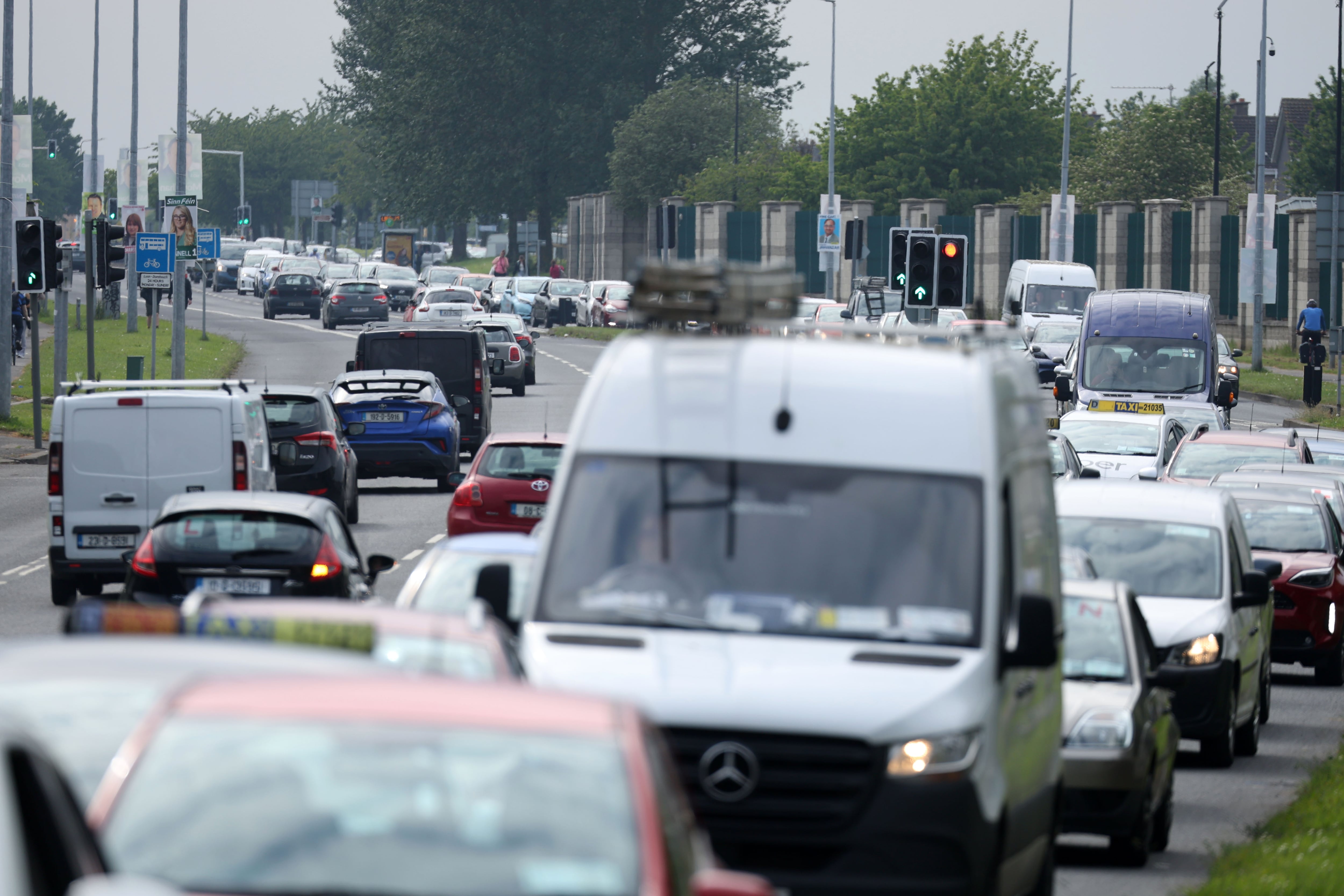Dublin cannot cope with increasing levels of population growth, without new transport services such as the Metrolink rail line, the first day of a planning hearing on the €9.5 billion project has been told.
The 18.8km, mostly underground line, will run from north of Swords to Dublin Airport, then on to Ballymun, Glasnevin, O’Connell Street and St Stephen’s Green before terminating at Charlemont Street, with 16 stations along the route.
The journey from Swords to Dublin city will take approximately 25 minutes. State transport agency Transport Infrastructure Ireland (TII) estimates MetroLink will carry up to 53 million passengers annually.
Speaking at the opening of the An Bord Pleanála hearing, Aidan Foley, Metrolink project director with TII, said the need for new sustainable public transport for Dublin was “very real”.
READ MORE
“A single Dublin commuter will, on average, spend over 213 hours a year stuck in traffic,” he said.
“Economists estimate that, without intervention, congestion and lost time will cost the Irish economy over €2 billion per annum in 2033. This problem is forecast to worsen as Ireland’s population continues to grow.”
Nowhere was this pressure more evident than on the population of Swords in north county Dublin, he said.
“Almost 8,000 workers currently commute from Swords to Dublin city centre, but only 12 per cent of those commuters use public transport,” he added.
“Congestion is reaching critical levels along the Swords, Dublin Airport, Dublin city centre corridor – a major artery for our economy,” he said. The morning peak journey times from Swords Pavilion to St Stephen’s Green, approximately 19km, “can be as much as 55 minutes or longer”. In short, Mr Foley said: “the Swords to city centre corridor needs Metrolink.”
Mr Foley also addressed the concerns of residents along the line who may have tunnels or stations built underneath their properties.
“TII are satisfied that the tunnel and the stations comprising the MetroLink Project will be constructed at an appropriate depth and using appropriate methodologies as per international best practice to ensure that the buildings above it will not suffer significant adverse effects.”
However, he said, a Property Owners Protection Scheme had been established. Under this scheme a panel of surveyors would be available to recommend repairs to any properties damaged by MetroLink “provided those repairs cost no more than €45,000. TII will implement that recommendation promptly with the homeowner’s agreement”.
A dispute resolution process and other legal remedies would be available to homeowners who did not agree with the surveyors’ assessment, Mr Foley said.
The ballroom of the Gresham Hotel was packed for the first day of the An Bord Pleanála hearing on the long-anticipated rail line.
The hearing was briefly addressed by John Downey, a town planner representing the Office of Public Works (OPW). The OPW has made 28 separate submissions to the board in relation to State properties and has raised particular concerns that proposals for the St Stephen’s Green Station will “permanently damage one of Ireland’s favourite parks”.
Mr Downey said irrespective of any decision the board makes on the Metrolink application the park was a National Monument and so “ministerial consent” will have to be sought and obtained for any works at St Stephen’s Green. The OPW will make more extensive oral submissions next week.
The board also heard from representatives of Fingal County Council and Dublin City Council in support of the project, with the environmental and economic benefits of Metrolink noted by both local authorities. Council planning officer Deirdre Scully confirmed that a location at the Irishtown Sports Centre had been identified to replace the Markievicz Leisure Centre which is designated for demolition.
The hearing is expected to last at least six weeks with more than 120 of the 318 parties who made submissions on the application having signalled their intention to address the board. These include residents and businesses affected by the route, politicians, campaign groups, heritage bodies and State agencies.
Once the hearing ends the board is expected to take several months to issue its decision. Minister for Transport Eamon Ryan hopes this will be by the end of this year, while others predict early next year. TII then has to seek tenders for the construction, which may push the cost of the line beyond the current €9.5 billion target, before formulating a final business case which it will submit to the next Government for approval. The line is not expected to begin operating until 2035.
- See our new project Common Ground, Evolving Islands: Ireland & Britain
- Sign up for push alerts and have the best news, analysis and comment delivered directly to your phone
- Find The Irish Times on WhatsApp and stay up to date
- Our In The News podcast is now published daily – Find the latest episode here













